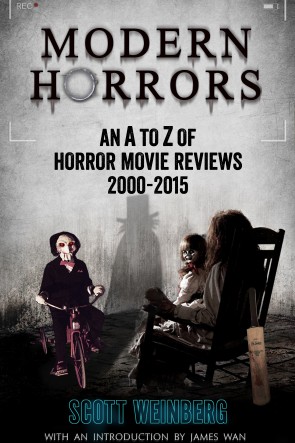Review: WILLOW CREEK (2014){0}
‘Found footage’ films are like soufflés: anyone can have a go at making one (the ingredients are widely available), but very few come out the way they’re supposed to. They’re generally considered to be an ‘entry level’ choice for filmmakers, so when you hear of one being made by an established filmmaker – such as Barry Levinson’s The Bay – it tends to make you sit up and take notice. Of course, how you approach the idea of a Bobcat Goldthwait’s own entry into the almost innumerable examples of the subgenre depends on two things: whether or not you’ve been keeping up with his career since he played Zed in the Police Academy sequels; and how you feel about the films he wrote and directed, such as Shakes the Clown, Sleeping Dogs Lie, World’s Greatest Dad and God Bless America. Full disclosure: I’m a huge fan of Bobcat’s films – I gave the scalpel-sharp satire God Bless America five stars – so I figured if he was trying his hand at a found footage film, he would pull it off with a sly, knowing intelligence, and a comprehensive understanding of the conventions of the form. I was right.
Willow Creek begins like many other found footage films: with a camera test, as Jim (Bryce Johnson) and his girlfriend Kelly (Alexie Gilmore) venture into the forested wilderness around Bluff Creek, a tributary of the Klamath River about 25 road miles north-west of Orleans, California, a middle-of-nowhere wilderness made famous in 1967 by the Patterson-Gimlin film, which purportedly captured the cryptozoological beast known as ‘Bigfoot’ on shaky 16mm film. Like Marshall Eriksen (Jason Segel) in How I Met Your Mother, Jim is the big Bigfoot fan, hoping to retrace Patterson and Gimlin’s footsteps and capture the big hairy biped on his own state-of-the-art video camera. Kelly is his reluctant companion, but after taking in a bit of local colour, she gamely accompanies the excitable Jim into the wilds of Bluff Creek.
Now, as the subject of a horror film, Bigfoot is a risky prospect: unless you approach it in the “go big or go home” style of Troll Hunter, it’s going to take a lot to establish any kind of credibility for the existence of an enormous hairy biped living out in the wilds of northern California, as elusive and apocryphal as our own Loch Ness Monster. Yet Goldthwait sets out his stall with considerable skill, slowly convincing us that there may be something to this age-old mystery after all. (His subversion of horror film conventions is also sound, as Kelly notes early on that the local absence of cellphone reception is like “the beginning of every horror movie.”) Further found footage conventions are checked off one by one: first, an interview with a sceptic, another with a self-proclaimed expert, and then others with people who claim to have had first-hand encounters; there’s even a threatening local who insists they turn back – although this could be more to do with a nearby marijuana farm or meth lab than a cryptid ape- or hominid-like creature roaming the forests. Pressing on, Jim and Kelly find a place to set up camp, zipping themselves into a tent as they spend their first night in the deep, dark forest.
It is here, roughly half way into the film’s 80-minute running time, that Goldthwait demonstrates a latent mastery of the horror genre, with an extended, almost unbearably tense scene in which Jim and Kelly cower, lit by their camera light, listening to things going bump in the night. It’s a brilliant scene, made more terrifying by the locked-off camera POV, which puts the viewer right inside the tent with the hapless couple, the superb sound design making us flinch and wince at every crack of a twig, guttural growl or animal howl. As someone not normally prone to being genuinely scared in a cinema (onlyThe Descent and [REC] had me mewing like a frightened child), I found myself shrinking myself further and further into my seat until it was almost fully folded – with me inside. If you like your horror films to be genuinely frightening, rather than unsettling or disquieting, I strongly suggest you see it in a cinema – with as few other people as possible.
Found footage films are sometimes like watching a football match for the best part of ninety minutes, hoping for a late goal – which doesn’t always come. Goldthwait’s film is better than most, giving us amiable characters, an engaging scenario, and a midsection which elicits genuine terror, and even if Goldthwait’s reach ultimately exceeds his grasp, Willow Creek stands head and shoulders above most of its peers – not unlike ol’ Bigfoot himself.
★★★
David Hughes (@DavidHughesTwit)








